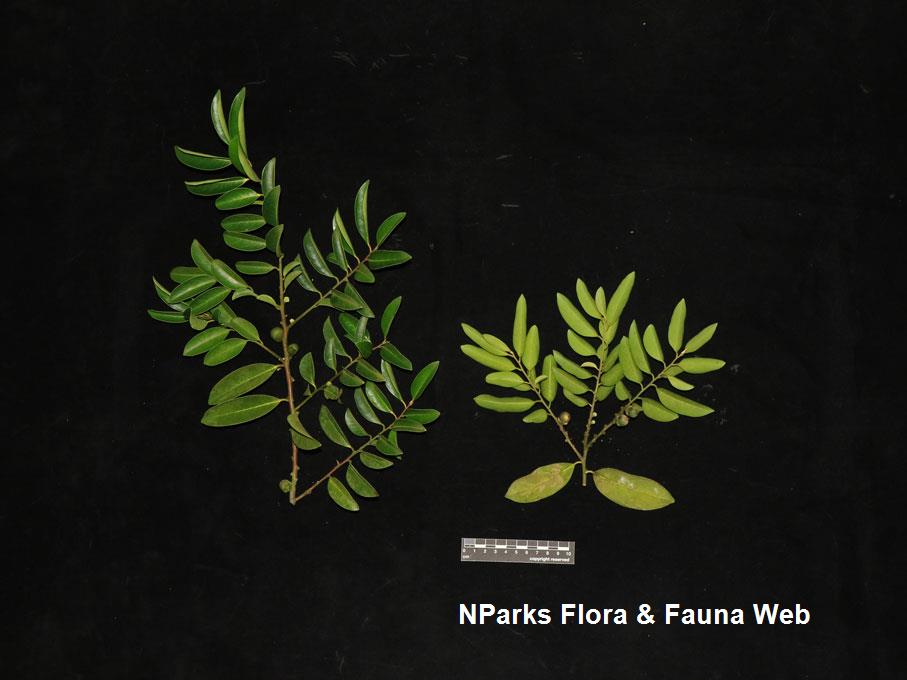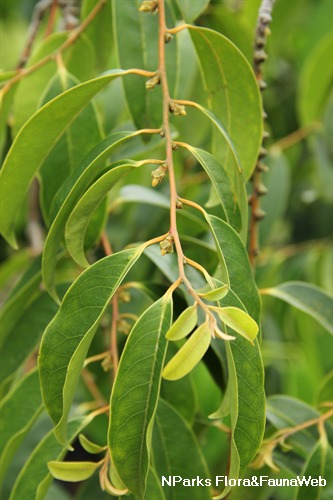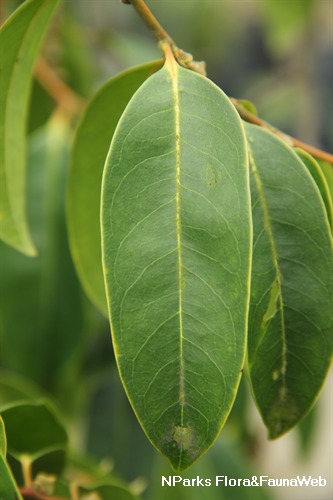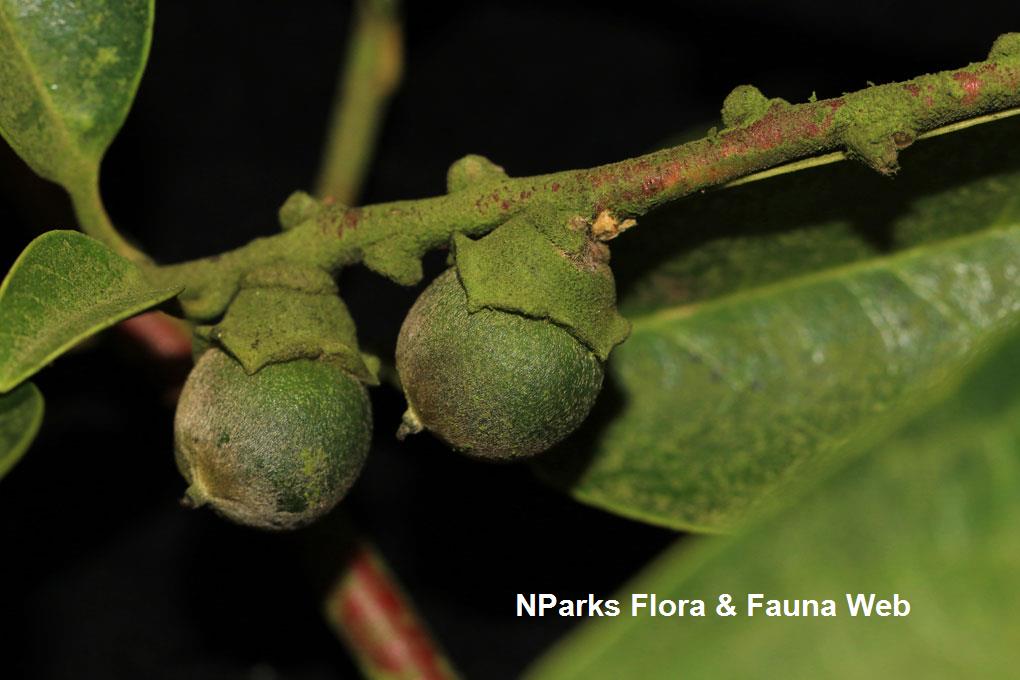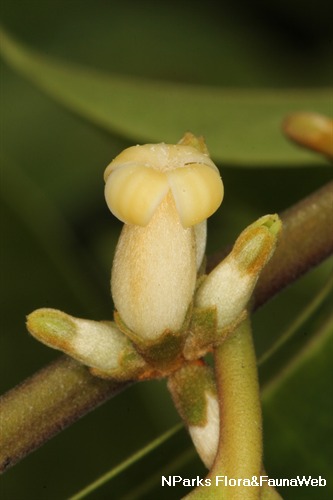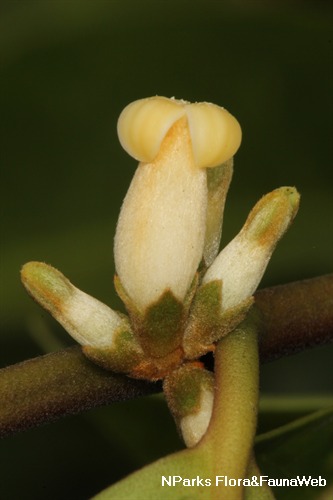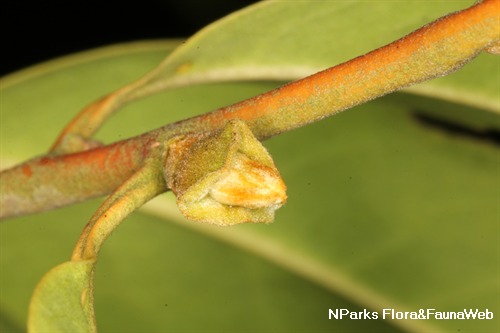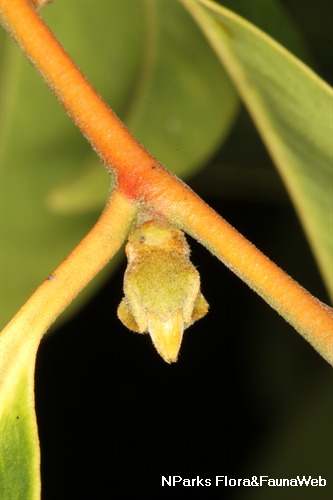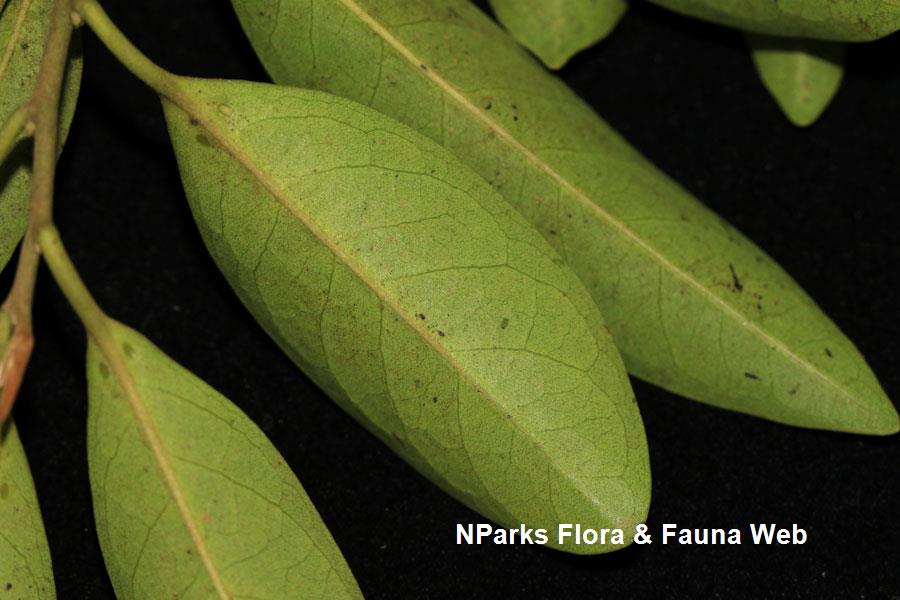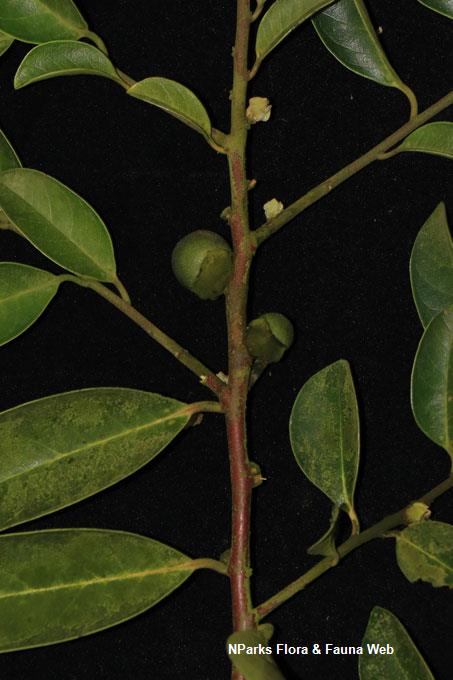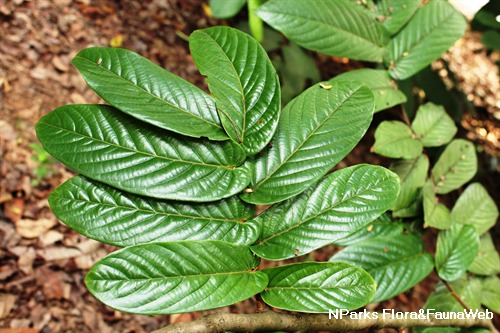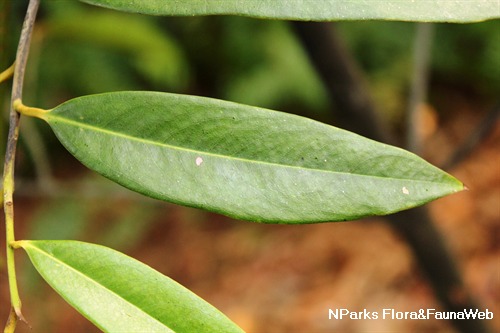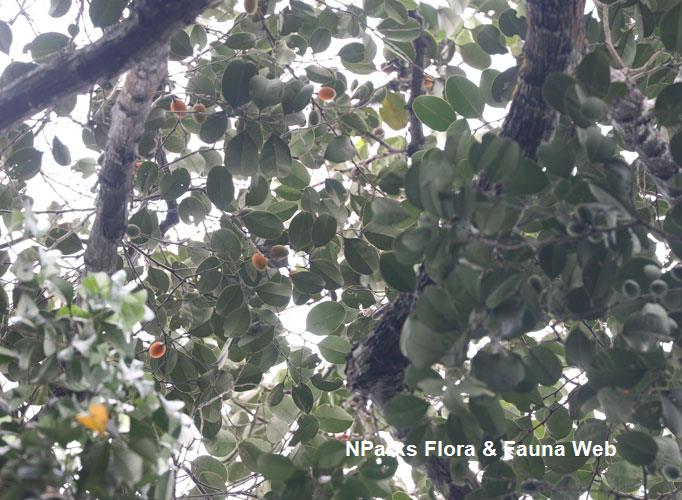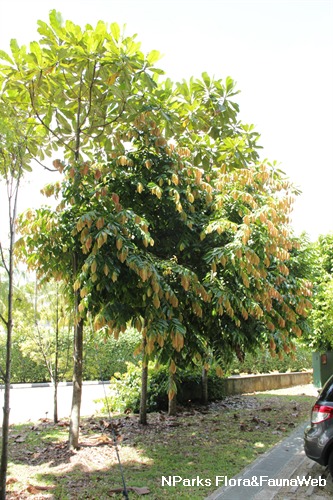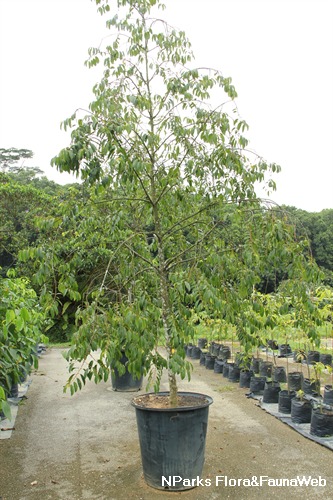
Back
Diospyros lanceifolia Roxb.
| Family Name: | Ebenaceae |
| Synonyms: | Diospyros clavigera C.B.Clarke var. pachyphylla (C.B.Clarke) Ridl., Diospyros pachyphylla C.B.Clarke |
| Common Name: | Common Malayan Ebony, Kayu Malam |
Diospyros lanceifolia or Common Malayan Ebony is a medium-sized tree, native to Singapore. Growing to a height of 20 m, the broad-elliptic to lanceolate leaves have 2 pit-like glands at the base. Flowers are monoecious found along the axils, the male flowers are 4-petalled, borne in dense clusters while the female flowers are 4 -5 petalled, produced singly or in clusters of 3. The fruit is a round to oval shaped berry with a short beak, sits on a shallow, waxy-lobed calyx that curved backwards. It turns from yellowish green to brown upon ripening.
Name
Classifications and Characteristics
| Plant Division | Angiosperms (Flowering Seed Plants) (Dicotyledon) |
|---|---|
| Plant Growth Form | Tree (Medium (16m-30m)) |
| Lifespan (in Singapore) | Perennial |
| Mode of Nutrition | Autotrophic |
| Plant Shape | Irregular |
| Maximum Height | 20 m |
Biogeography
| Native Distribution | Malaya, India, Sumatra, Borneo, Philippines, Singapore |
|---|---|
| Native Habitat | Terrestrial |
| Preferred Climate Zone | Tropical, Sub-Tropical / Monsoonal |
| Local Conservation Status | Native to Singapore (Least Concern (LC)) |
Description and Ethnobotany
| Growth Form | It is a medium sized tree that can grow to 20 m tall. |
|---|---|
| Foliage | Leaves are broad-elliptic to lance-shaped, sometimes egg-shaped to elliptic measuring 4.5 cm - 15 cm long by 2 - 5 cm wide held on a stalk of 0.8-1 cm long. The leaves often have 2 pit-like glands at the base, the mid-rib is sunken above, lateral veins are faint, looping away from the margins. |
| Flowers | Flowers are monoecious where the male and female flowers are produced on separate trees, found along the axils. Male flowers are 4-petalled, held in clusters from 3 to many flowered, they are bell-shaped, hairy outside, smooth inside, cream-coloured with a slight purple tinge. The female flowers are 4 to 5-petalled, borne singly, sometimes in clusters of 3, they are urn-shaped, yellowish, hairy on both sides. |
| Fruit | The fruit is round to oval shaped berry with a short pointed beak or point, turning from yellowish green to brown upon ripening. The round fruit is velvety when young, measures to 1.5- 2.5 cm wide, sits on a shallow 3-5 lobed cup-shaped calyx with waxy-edged lobes that curved backwards. |
| Habitat | Occurs commonly in lowland and hill forests at altitude up to 700 m, sometimes within coastal forests. <1 & 2> |
| Associated Fauna | It is the larval host plant for the Studded Sergeant butterfly (Athyma asura idita). |
| Cultivation | It can propagated by seed. |
| Etymology | Greek dios, divine; Greek pyros, wheat, meaning divine wheat or food; Latin lanceus, lance-shaped; Latin folia, -leaved, referring to the species’ lance-shaped leaf blades |
Landscaping Features
| Landscaping | It can be propagated along streetscapes, parks and gardens. |
|---|---|
| Desirable Plant Features | Fragrant (Flowers) |
| Landscape Uses | Suitable for Roadsides, Parks & Gardens |
Fauna, Pollination and Dispersal
| Fauna Pollination Dispersal Associated Fauna | Butterfly Host Plant (Associated with: Athyma asura) |
|---|---|
| Pollination Method(s) | Biotic (Fauna) |
| Seed or Spore Dispersal | Biotic (Fauna) |
Plant Care and Propagation
| Light Preference | Full Sun, Semi-Shade |
|---|---|
| Water Preference | Moderate Water |
| Plant Growth Rate | Moderate to Slow |
| Rootzone Tolerance | Moist Soils, Well-Drained Soils, Fertile Loamy Soils |
| Propagation Method | Seed |
Foliar
| Foliage Retention | Evergreen |
|---|---|
| Mature Foliage Colour(s) | Green |
| Foliar Type | Simple / Unifoliate |
| Foliar Arrangement Along Stem | Alternate |
| Foliar Attachment to Stem | Petiolate |
| Foliar Shape(s) | Non-Palm Foliage (Lanceolate, Elliptical, Oblong, Ovate) |
| Foliar Venation | Reticulate |
| Foliar Margin | Entire |
| Foliar Apex - Tip | Acuminate |
| Foliar Base | Rounded / Obtuse |
Non - Foliar and Storage
| Stem Type & Modification | Woody |
|---|---|
| Root Type | Underground |
Floral (Angiosperm)
| Flower & Plant Sexuality | Unisexual Flowers , Monoecious |
| Flower Colour(s) | Yellow / Golden, Cream / Off-White |
|---|
| Flower Grouping | Cluster / Inflorescence |
| Flower Location | Axillary |
| Flower Symmetry | Radial |
| Individual Flower Shape | Urceolate / Urn-shaped, Campaulate / Bell-shaped |
| Flowering Habit | Polycarpic |
Fruit, Seed and Spore
| Mature Fruit Colour(s) | Green, Brown |
|---|---|
| Fruit Classification | Simple Fruit |
| Fruit Type | Fleshy Fruit , Berry |
References
| References | <1> Gardner, S., Sidisunthorn, P. & Chayamarit, K. (2015). Forest Trees of Southern Thailand. Vol. 1, pp. 503. Bangkok: The Forest Herbarium, Department of National Parks, Wildlife and Plant Conservation. <2> Ng, F.S.P. (1978). Tree Flora of Malaya, vol. 3, pp. 76. Selangor: Forest Department, Ministry of Primary Industries Malaysia. |
|---|
Image Repository
Others
| Master ID | 29634 |
|---|---|
| Species ID | 3943 |
| Flora Disclaimer | The information in this website has been compiled from reliable sources, such as reference works on medicinal plants. It is not a substitute for medical advice or treatment and NParks does not purport to provide any medical advice. Readers should always consult his/her physician before using or consuming a plant for medicinal purposes. |

